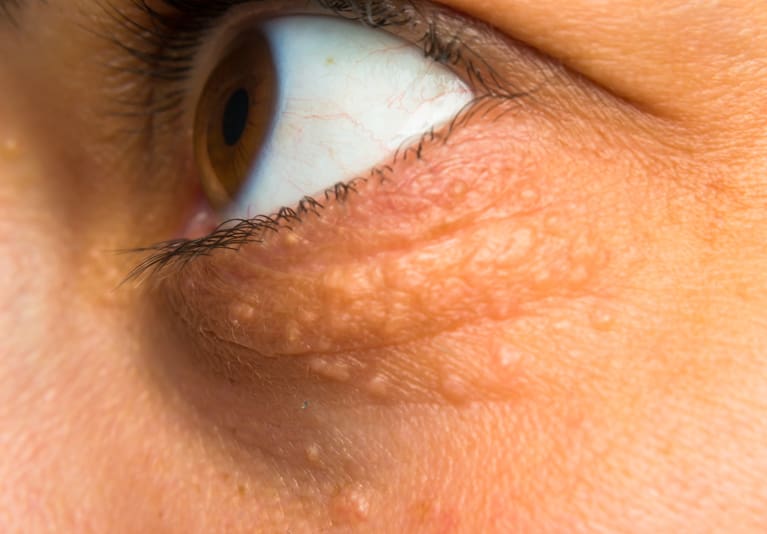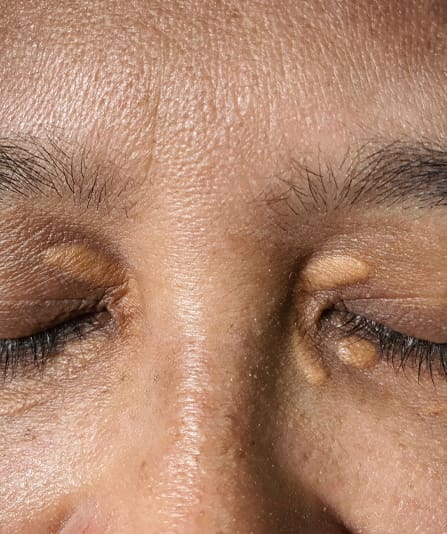Face by Mr Ioannis Goutos
Xanthelasma

‘Xanthelasma’ is a medical term which refers to small, flat, pale yellow plaques that can occur around the eyes, typically appearing around the inner corner. These plaques can be found anywhere on the body, and are then referred to as ‘xanthoma’. They are made up of cholesterol deposits, which can appear as a result of logstanding high levels of cholesterol or lipids (fat) within the blood. As such, they are often associated with those who are overweight or suffer from high cholesterol.
In some cases, they can also occur in those with a family history of developing xanthelasma. They are most commonly seen in those over the age of 40, and appear more often in women than in men. Rarely, xanthelasma can be caused by certain inflammatory skin conditions or thyroid problems.
If you have xanthelasma, it is recommended to see your GP in the first instance. Whilst not harmful themselves, they may be a sign of an underlying medical problem, such as uncontrolled high cholesterol. This can be treated through modification of lifestyle factors, such as weight loss, regular exercise and having a healthy diet, or through medications known as statins. If left unchecked and untreated, over time high cholesterol can increase your risk of heart disease, stroke and diabetes.
Book your consultation today
Book nowAbout this condition
Unfortunately, even if the high levels of cholesterol are treated and corrected, the xanthelasma do not tend to go away on their own. They may stay the same, or even become slightly larger with time. Whilst they are not typically painful or itchy, and do not affect a person’s eye movements or vision, some individuals find them unsightly. This can lead to them feeling self-conscious and impact their confidence and self-esteem. As they occur around the eyes, they can appear obvious to onlookers and can be difficult to disguise using cosmetic products or clothing.
If you are seeking complete removal or resolution of xanthelasma, there are a number of aesthetic procedures that can be considered. These include laser-based treatments (most commonly a carbon dioxide-based laser) or surgical removal of the xanthelasma. The surgery for xanthelasma can involve direct removal of the problem lesions themselves, or may be performed as a blepharoplasty (eyelid lift) procedure, during which excess skin, including the xanthelasma, is removed. Laser involves a layer by layer removal of the lipid deposit leaving a small wound to heal on its own. There are risks associated with having laser treatments or surgery, particularly with them being performed so close to the eyes, and it is important to discuss these risks in full with an experienced clinician so that you are able to make an informed decision about your treatment. Unfortunately, it is also possible for xanthelasma to recur following removal, particularly if the underlying high cholesterol has not been addressed and treated.
Mr Ioannis Goutos is a highly skilled plastic surgeon and is able to offer a wide range of surgical and non-surgical procedures for a variety of cosmetic issues. Mr Goutos is proud to offer comprehensive assessments and bespoke treatment plans for each individual, based on their situation and cosmetic goals.

Testimonials
Mr Goutos is delighted to share some of his patient and peer feedback on their experiences of his services.











